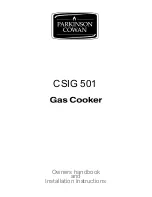
© 2022 Staheli West
85
Judging Bale Moisture with a
Handheld Moisture Probe
Judging Bale Moisture with a Handheld Moisture Probe
● If you use a handheld moisture probe to monitor bale moisture during operation:
□
You must DETERMINE acceptable bale moisture parameters.
□
BE AWARE that the accuracy of this type of moisture sensor in steamed hay is not suitable for a true
real-time reading of bale moisture during the baling process. The surface moisture on the steamed
hay causes the moisture to read several points higher than the actual moisture because the sensor
depends on electrical conductivity between two points. This conductivity always looks for the path
of least resistance, and any type of surface moisture will carry conductivity more readily than the
entire profile of the crop being baled.
•
Fully-Cured Hay: If an operator becomes very familiar with the typical offset of the moisture
reading of this instrument compared to the actual moisture in the bale, he can learn to use a
handheld “contact type” moisture sensor with reasonable effectiveness when baling fully cured
hay using steam. Various conditions at the time of baling can affect the performance of this
type of sensor. The offset reading will vary depending on ambient conditions in the
windrow.
▫
If the windrow of hay has some degree of natural dew and a small amount of steam is
added to the hay to bring it up to an optimum moisture level, there will be only a small
offset in the moisture reading compared to the actual moisture in the bale.
▫
If the windrow is very dry, requiring a higher rate of steam to bring the bale moisture to an
optimum level, there will be a much larger offset in the moisture reading compared to the
actual moisture in the bale.
Alternative 2
Handheld
















































